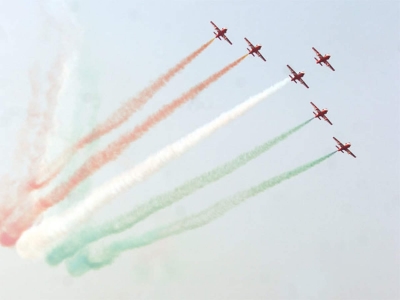What makes a plane aerobatic?

The bright trails of smoke be it white or in various colours, that emanate from aircraft during flybys are a treat to watch. Whether you are seeing it live out there in the skies, or on R television, these aerobatics (a word obtained by combining aero with a form of acrobatics and used to mean loops, rolls and other spectacular feats of flying performed in one or more aircraft as a form of entertainment) are the mainstay in any aerial flying demonstration. Did you know that generating this smoke is a technical challenge and requires specific equipment for optimal performance?
First performed post-World War II, aerobatics teams have been using smoke in their flight exhibitions since then, with an upswing in usage from the second half of the 20th Century.
There are two main components to these coloured smokes being produced the smoke system and the smoke oil.
The smoke system pumps paraffin based smoke oil from a tank using injectors and out into the exhaust system. The arrangement comes in various sizes and is fitted differently based on the aircraft. These systems are engineered keeping in mind both safety and ease of use.
As for the smoke oil, they are a blend of mineral oil with a paraffin base. Smoke oils now are eco-friendly and non-toxic, and they are also highly refined in order to produce better results - completely atomised without leaving residue.
Oils are developed specifically keeping in mind the manoeuvres to be performed. The overall system ensures coloured oil is delivered at a particular pressure to the injection nozzles so that the smoke output is consistent.
All this happens at the flick of a button for the pilot who is performing the exhibition. They don't switch it recklessly though, as the expensive nature of the entire set-up means that it has to be done judiciously.
Picture Credit : Google
Comments
No comments